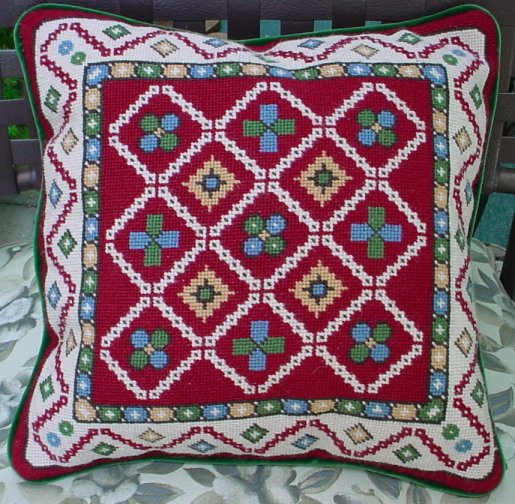Reflections on a life lived
I received my Ph.D. in Germanic Studies from the University of Texas in 1997, but I work as a software quality assurance engineer. I do not directly use my language/culture/literature education in my work, but I started out as a computational linguist in jobs which very much required my educational background. I was recently invited to talk with the students currently enrolled in my graduate program about career opportunities outside of the academy. How could I offer any kind of advice when I didn’t really have any particular plan before the age of 30? After a lot of soul searching, I settled on describing it this way: I was the recipient of some significant good luck, but only because I was open to a variety of experiences did I take advantage of the luck when it presented itself.
The biggest break came after six years in grad school. I had completed my coursework, was working on my dissertation and was beginning to think about my longer-term future. I admitted that I wasn’t particularly passionate any longer about my academic area (if I’d ever been very passionate, to be honest). Therefore, there was no reason to believe that I would be among the smallish percentage of my peers who would get good jobs in academia. So, I made a conscious decision to open myself up to other opportunities. Very shortly after this self-confession, there was a part-time job opening for a English-to-German lexical coder and quality analyst with the Metal machine translation project (which was, at the time, owned by Siemens and maintained a development office at UT). To make a long story short, this job led to a full-time job as a software quality assurance engineer with Logos machine translation and ultimately to my career as a software QA engineer.
As far as I know, I was the only one of 20 or so qualified grad students who applied for the Metal position. There are very few industry applications for my graduate education, and working in machine translation was one of them, but most of my peers were so focused on the very narrow path that was presented to them by their graduate program that they didn’t even think to try out this opportunity. Tellingly, when I decided to pursue this path instead of one directly in the academy, some of the faculty members in my program wrote me off. They didn’t consider my job as a computational linguist a valid career choice for my education.
So, my advice to the current grad students was to think more broadly of the skills that they’ve acquired in grad school and just to be open to the opportunities that fate places in our paths. You just never know what might come along, and if you’re not open to it, you might not recognize an interesting opportunity when it presents itself.
Get Rich Slowly!
 Marco Arment‘s new project, which he’s calling The Pinboard Investment Co-Prosperity Cloud, is brilliant. As a counter to the typical get-your-investors-rich-quickly model of venture capital investment in startups, Marco believes that ” social capital [not money] has become the bottleneck to success.” Therefore, Marco is backing innovative projects with his own social capital: his ability to get “world to go look at what you made.”
Marco Arment‘s new project, which he’s calling The Pinboard Investment Co-Prosperity Cloud, is brilliant. As a counter to the typical get-your-investors-rich-quickly model of venture capital investment in startups, Marco believes that ” social capital [not money] has become the bottleneck to success.” Therefore, Marco is backing innovative projects with his own social capital: his ability to get “world to go look at what you made.”
Having worked in numerous startups (including one that refused venture capital), I’ve long been critical of the VC model of investment. My primary criticism is that it reinforces short-term, get-rich-quick thinking, not a view for the long term viability of the product or services. Marco holds similar beliefs and furthermore, he has the ability to help give a leg up to innovators who aren’t interested in, or aren’t appealing to, the venture capital model.
Racial injustice
This story reminds me of an experience that I had many years ago that made a deep impression on me. In 1989, I think it was, while I was in grad school, I taught German at Southwestern University for a semester while the German professor there was on sabbatical. On my first drive through Georgetown, I got a speeding ticket in a school zone. For the record, I had slowed for the school zone but sped back up when I thought I was through it. I wasn’t paying close enough attention–I was still in the school zone.
Being an idealistic young man, I decided to appear in court to plead that it was my first drive through town, etc. So, I showed up to my court date, wearing a shirt and tie, or course. When I got there, the court room was packed with probably over a hundred people. Like the Episcopal priest who recounted the story I linked to above, I was surprised at the racial diversity in the room.
The judge went down hist list of accused, reading the charge and asking the person whether they would plead guilty, innocent or no contest. As he read one Hispanic man’s name, a woman stood, explained that the man doesn’t speak English and that she was his sister. The judge asked her if she could translate for him. She agreed.
The judge read the charge (public intoxication, if I recall correctly). When the judge asked how the man would plead, my Spanish was good enough to understand that the sister only translated guilty or not guilty but not no contest. Either the sister didn’t understand what it meant or how to translate it, or both. The man pleaded guilty.
It struck me that the court receptionist was bilingual but nobody in the court itself was. Justice was not served that day due to a language barrier and the court’s lack of preparedness for it.
The love of a dog
It was my birthday yesterday, and I had to lay down Mister President, my dog of ten years, to rest forever.
. . .
Mister President came to me at the height of my selfishness, during a time of my life when, fundamentally, I was interested only in myself, despite all the relationships I’d had up until that point. And when he came to me, he taught me how to care for someone else, to devote myself to someone else, to really love someone else — unreservedly and unconditionally .
. . .
In this way, he saved me. Without him, I don’t know if I would have been ready to fall in love with Laura when I met her, and more importantly, I don’t know if I would have known how to sustain that love. And without Mister President, I don’t know if I would have been equipped to care for and truly love our wonderful daughter.
In and of themselves, those are two enormous gifts that he gave me. This is what dogs do, I guess. You think you’re doing all the giving. But they give you more than you know in return.
On Death
We have dealt with the deaths of several people close to us in the last few years. This comment on MetaFilter really speaks to me:
This is what helplessness feels like. Nobody is good at watching someone they love pass away. In the face of fear and sadness and anger and denial, when your brain is spending most of its processing power yelling and then crying and then yelling again “No! Noooooo! No!” for days or weeks on end, you don’t always do the best things. You don’t do the things you’d imagined you would do. You don’t do the things you will wish you had done, when you spend the ensuing years reliving those final hours with your mom or your dad or your spouse. You feel like a drowning person, flailing about for something to hold onto, but there’s nothing to hold. You try all the coping methods that have worked in the past: tell a funny joke, give them something to be proud of, distract yourself, even lie and say it’s all going to be ok, but it all seems crass, and none of it stops the dying.
But that’s ok. It’s horrible and terrifying and you do everything wrong, and still somehow there is beauty in your very failure. You are being forced to face up to something huge, and your inability to handle it is part of what makes you human, part of the price you pay for loving deeply. There is a profound honesty in this fumbling, an admission that the loss of this person is leaving you directionless.
Some of my cross stitch designs
In addition to needlepoint and bargello, I also do cross stitch–though, my cross stitch projects tend to be much less ambitious than my needlework designs.
Here are a few of the cross stitch projects that I’ve done over the years:
The dogs in this design come from Mary Norden’s Ethnic Needlepoint book:
These elephants come from the same book:
I did this for an online gift exchange:










